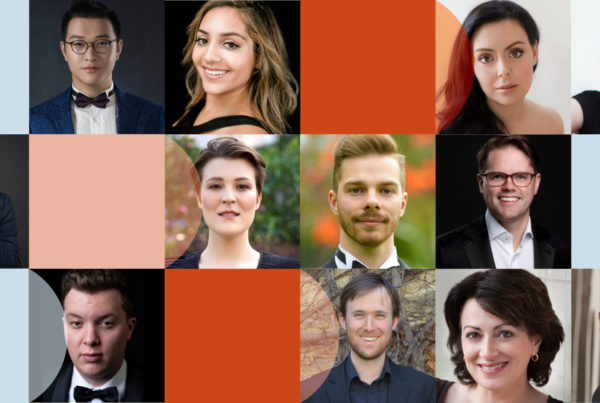”I was attracted to the non-realistic, somewhat absurd and chaotic nature of the opera.
Joseph MitchellDirector, BOOJUM!
Currently, Artistic Director of Adelaide Festival Centre’s OzAsia Festival, Joseph is an experienced arts manager and director and is the director for State Opera’s upcoming production of BOOJUM!
Tell me a bit about your directorial concept for Boojum!
Our approach to this production is that it is all unfolding in the mind of Charles Dodgson (who used the pen name Lewis Carroll for his famous novels and poems). The opera explores areas of his life that he is trying to resolve such as his relationship towards the young Alice Lidel (who was his inspiration for Alice in Wonderland) and with his own identity as he realises that the pen name Lewis Carroll will become eternal while the real Charles Dodgson himself will soon meet his own Boojum and vanish away.
Having the whole work unfold inside Dodgson’s mind gives us lot of scope for creative fun on stage as the work seamlessly moves between real life and the stories which Carroll/Dodgson wrote including the two Alice adventures, Jubjubby and The Hunting of the Snark.
This approach also gives is a lot of flexibility around representing reality. For example, Charles Dodgson’s own identity is split into two characters as he actually sees Lewis Carroll as someone else (or a completely another part of his own identity not connected to himself) and therefore we have two singers playing the roles, one as Charles Dodgson (Adam Goodburn) and one as Lewis Carroll (Brock Roberts). There is also a doubling of Alice Liddell with a young child version (Katrina Mackenzie) and an adult version (Joanna McWaters) which is an important counterbalance to the Carroll / Dodgson doubling.
Given that the work is about Charles Dodgson resolving some if his inner turmoil as he approaches the end of his life, it also makes sense that there is a blurring of reality and fiction in the staging of the work as well. There are several references to Dodgson being old in the second act and even ‘tilting at windmills’ which would indicate his state of mind could be similar to Don Quixote, and in that regard, there is lots of fantastical imagination and blurring of reality and fiction together, with the audience needing to keep up with Dodgson’s final life adventure.
The language is creative and complex in Boojum!, how are you using the poetry in the production to convey the themes and ideas?
The poetry speaks for itself quite well – it is a very interesting libretto. Given that it is quite absurd and bends around with time and reality a lot, we will ensure that some of the visual cues in the set and costume design help ground a sense of where we are in the story.
There are also some sequences where Dodgson recites his own poetry as a monologue and this gives us some hints and insight into what he is thinking at different stages through the work.
What drew you to the production and made you want to direct it?
I was attracted to the non-realistic, somewhat absurd and chaotic nature of the opera. The work is a puzzle which even the creative team have to work hard to solve, and that makes it fun and challenging for me as the director. We will hopefully present the puzzle-like nature of the work in a way where the audience will have to discover a few things for themselves, but we will try to guide them in the right direction to access this fun, unpredictable, and slightly askew opera that celebrates the inner world or Lewis Carroll and his famous stories.
Why is it important to bring back the Lost Operas of Oz like Boojum!?
It is imperative for Australia to celebrate its own artistic repertoire, especially in opera where often the work hasn’t been staged as frequently as say the European classics. Boojum is extremely fun, accessible and important modern opera work. It has been performed in the USA to outstanding acclaim and it is crucial to keep works like this in the Australian repertoire. The music is just so well written and lots of fun as well. Even after several months of preparations, I am still humming the work aloud daily.
How are you using the set design to portray the story and themes?
The set design plays a key role in helping to connect all the wild ideas and chaotic nature of the opera. Given the concept is to be inside the mind of Charles Dodgson, the set design blends together his real and imagined worlds. We decided to use a playground as the starting point for this as it represents a space where one is encouraged to play and use their imagination at the same time. I think this gets to the heart of Dodgson himself, he was always imagining new stories, inventions, games and puzzles. He relished in the idea of adolescent innocence where one is free to imagine and create away from the pressures and restrictions of adult life.
The playground is, therefore, an extension of Dodgson’s mind. The area where there would be a cubby house is actually Dodgson’s apartment where he would write, invent things and think. This is a central point of the set design and reaching out from this are things like a roundabout which allows people to glide in circles and dream with the wind racing through their hair. There are also park benches which are where a lot of the characters from The Hunting of The Snark gather. These characters are the chorus in Dodgson’s mind and therefore there is a small hint of Waiting for Godot, the idea that they are there in the park and talking a lot about going hunting for a snark, but actually they are not going anywhere, as they are actually inside Dodgson’s mind, and the set design is a representation of his mind on stage.



